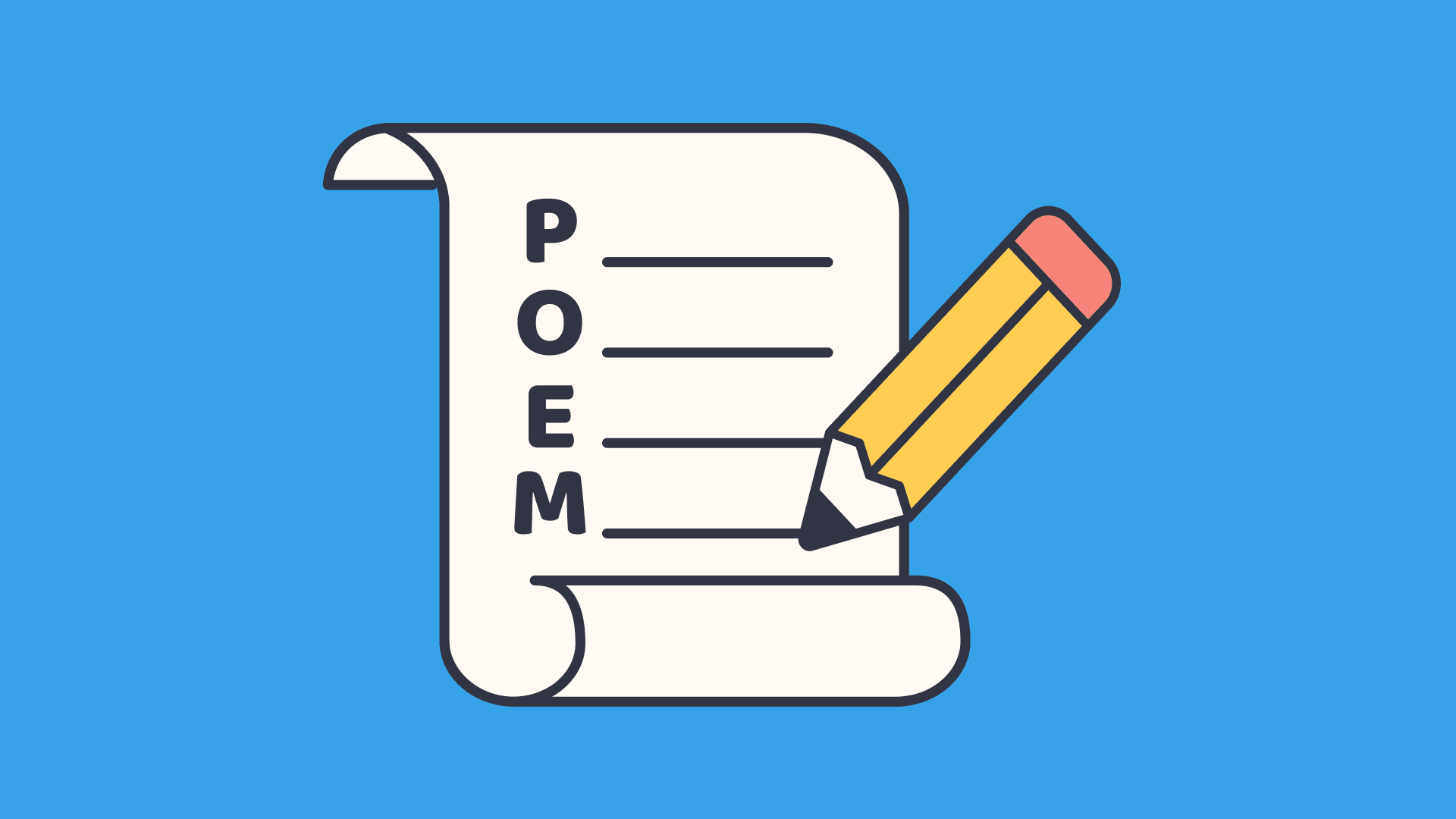10 Fun writing activities for elementary and middle school students
In this guide
Using activities to encourage creative writing
Creative writing is an important writing style for students to master and can have a positive impact on the attitude students take towards writing. Creative writing gives students an outlet to express themselves that is not fostered in formulaic or structured writing assignments.
There are a number of hurdles when it comes to creative writing:
- What is the subject matter?
- How do I use narrative structure?
- How can I engage the audience?
- How can I actually get my story to make sense and flow?
- How on earth do I untangle the complication that I have developed?
- Are there ways to end my story other than killing off my characters or having them wake from a dream?
To provide structure to writing assignments ensure that you include specific instructions and criteria for assessment as well as offering scaffolds and support for students that need them.
1) Alternate endings
Suitable for: Elementary / Middle School / High School
This activity is inspired by books I read as a student.
Similar to ‘Choose your own Adventure’ stories, but in this activity asks students to change the ending to a story. Use stories that are familiar to students such as fairy tales like ‘Cinderella’, ‘The Little Mermaid’, or other imaginative texts. You could also use a short story that you have previously read with your students.
Directions:
- Read the story with students.
- Students then write an alternate ending to the text.
- Students share their alternate ending with their peers.
- If the text you are using has illustrations, the students can illustrate their new ending.
In an alternate ending text, perhaps the princess doesn’t marry the prince, Romeo wakes up and he and Juliet live happily ever after, or in ‘Harry Potter’ Voldemort is triumphant. Give students a few examples but then allow them to be creative.
This is also a great opportunity to show students the interconnected nature of events in a plot. Sometimes authors hint at events later in the text or perhaps simply that happens at the beginning of a text can, and do, impact the ending.
2) Picture this

Suitable for: Elementary
Provide a visual stimulus to inspire students as a starting point for their writing. This can also allow the opportunity to teach students about figurative language such as imagery, personification, and onomatopoeia.
Visuals can come from storybooks, online searches, or physical pictures. You could even use a video without sound.
Directions:
- Provide a visual stimulus
- Students use that stimulus to write a story.
- Share the story with their peers
There are several ways this can be adapted to foster more creativity in students:
- Describe what is happening in the story using elements of imagery.
- If there are people or animals in the picture, write a story that includes dialogue.
- Imagine you are in the picture and write about what is happening from your perspective.
- Write a poem about the picture.
3) Different perspectives
Suitable for: Middle School / High School
Understanding perspectives and viewpoints is a good way to increase empathy and address students’ social skills development. The idea that a story can be told from different viewpoints allows the teacher to make the connection that considering others’ perspectives is an important life skill.
I clearly remember doing this creative writing assignment when I was in middle school. We read the book “The True Story of the 3 Little Pigs” by Jon Scieszka. This book tells the story of the three little pigs but from the viewpoint of the wolf. Everyone in the class found the story entertaining and we all gained a new appreciation for the wolf.
Directions:
- Assign or allow students to choose a well known story or use a text that has already been read in class.
- Students rewrite the story from the perspective of another character.
- Share their writing with their peers.
When assigning this writing activity allow students to choose which character’s perspective they write from. They can choose a major or minor character. It can also help to narrow the focus of their writing if they choose a particular scene or part of the story to rewrite.
4) Book trailers

Suitable for: Elementary / Middle School
This activity challenges students to create a trailer for a book. I like to do this activity instead of the traditional book report as it helps students to get excited about writing and also lets them share their book recommendations with other students.
The challenge in this activity is for students to write a book trailer that has enough information to get someone else excited enough to read the book, but doesn’t give away the ending. Before this activity, show students examples of popular (and age appropriate) movie trailers. Discuss how the information is presented to persuade the viewer to watch the film in question. Ask students to analyze what does and does not work.
Directions:
- Following the analysis of movie samples, students read a book or choose one that they are familiar with. .
- Students write the script for a trailer for the book.
- Students share their trailer with the class as a way to promote reading new books.
If your students have access to technology they can record their trailer. I gave my students bonus points if they read their trailer in a voice that fit the type of book – drama, romance, adventure, etc.
5) Dystopian worlds
Suitable for: Middle School / High School
The worlds of dystopian literature often appeal to young people. Frequently these types of stories contain teenagers that fight oppression and injustice. Young adult literature targets thoughts and issues which are pertinent to middle and high school students. Dystopian fiction allows them to battle and understand these very real issues within imagined worlds where the government or technology has taken over and the people must fight for freedom.
Before completing this activity, share examples of dystopian literature with students. Books such as George Orwell’s “1984”, Ray Bradbury’s “Fahrenheit 451”, and Lois Lowry’s “The Giver” are great examples. There are also more contemporary examples such as “The Hunger Games” by Suzanne Collins, “The Maze Runner” by James Dashner, or Cormac McCarthy’s “The Road”. Film versions might be quicker to use as examples depending upon your cohort.
This activity works best when students have had exposure to at least one example of dystopian literature but more than one is better.
Directions:
- Students learn about the hallmarks and format of dystopian literature with relevant examples.
- Students create their own dystopian world including relevant aspects from the genre – government control, environmental destruction, technology, propaganda, and surveillance. They should include characters and descriptions of their world.
- This could be completed as a creative writing piece and/ or a minecraft or drawn world which is then built upon.
This activity could also be completed in an anthology style.
- Students create a cover page which includes words and illustrations about their dystopian world. Students can write a scene, chapter, or short story that includes the elements created in the cover art.
- Finally, students can present their world to their classmates.
Allow students to be creative in how they present their new world – video presentation, poster, diorama, animation, etc.
A fun and creative extension for this activity would be to create travel brochures or travel posters for their fictional dystopian worlds. This adds a creative and visual element to the task and allows students to expand and develop their dystopian worlds.
6) Multiverse history
Suitable for: Middle School / High School
The multiverse in Marvel comics and movies raises the question of “what if?”. This is always an interesting fictional angle to consider, especially in the context of historical events.
In this writing activity, students rewrite a real life historical event while changing the outcome to one of their own imagination. For example, what if the colonies had lost the Battle of Yorktown and thus the American Revolution?
In the multiverse, different worlds exist that contain different people and realities. Students can explore what might have been and imagine new scenarios. Choosing a range of specific events to choose from will narrow the focus of the topic for students whilst still allow them the freedom of choice.
Directions:
- Assign an event to each student.
- Students reimagine their historical event and the possibilities that may ensue.
- Allow for creativity such as writing in the form of a play, narrative, news article, or podcast script.
This activity is similar to the first one on this list, alternate endings, but has more of an informational text writing focus. Students must know the historical context of the event they are rewriting and/ or have researched it before writing. This will allow them to be creative but also to use relevant academic vocabulary which is appropriate to the task.
7) Mystery items

Suitable for: Elementary
Many young students love a mystery reveal. Watching videos of people unboxing toys and other items had become wildly popular online. My two young nieces love to receive and open blind bags for their birthdays. This writing activity allows your students to play into this love of mystery and surprise.
Directions:
- Place several items in a box. Another fun way to do this is to place small items into individual sealed bags for each student.
- Students select an item or are given a bag.
- They examine their object, but do not reveal it to other students.
- Write a short description of the item. The goal is to use enough descriptive language for someone else to guess the object.
- In partners students read their descriptions while their partner guesses.
- Students can then finish by writing a fictional story using their object as the main character, central theme or object.
8) Character diary
Suitable for: Elementary / Middle School / High School
Teaching point of view can sometimes be confusing for students. In order to assist with their understanding, in this activity students write a diary entry from a character’s point of view.
Directions:
- Students choose a character in a text. This can be a text that you have read before or a shared class text.
- Write a diary entry from the point of view of the character. A diary entry would be written from a first person point of view.
- Or rewrite a scene in the novel from another character’s point of view. How would the ending be written by the antagonist rather than the protagonist? How would the scorned love interest see this scene rather than the couple that get together? What would the parents be thinking rather than the young people that the text is written about?
When choosing a text, look for a story with several character options to give students options for their writing. Shifting a story from one point of view to another helps students to begin to understand the elements associated with each of the different types of point of view. The complexity of the mentor text and the complexity of the diary entry or rewritten scene will depend upon the grade level you are teaching.
9) Rhyming stories
Suitable for: Elementary
Rhyming words are an important part of developing phonological awareness in young students. Phonological awareness is the ability to recognize and manipulate the sounds in words. Using rhyming words to help students to hear the ending sounds of words is an important part of this skill.
Reading stories with rhyming words can help students to begin to recognize these sounds and assist them in their writing. This activity challenges students to write a story that contains rhymes.
Directions:
- Read words with rhyming words. Suggestions include Dr. Seuss books such as “Hop on Pop” and “Green Eggs and Ham”. Margaret Wise Brown’s book “Goodnight Moon” also contains multiple examples of rhyming words. My own children enjoyed the rhyming book “Sheep in a Jeep” by Nancy E. Shaw.
- Students write a story with lines containing rhyming words.
- To make this more challenging, set a word limit such as a rhyming story in 100 words or less.
If writing a whole story is too challenging for your students, try writing a rhyming poem or paragraph. You can also have students create a rhyming story or poem with a partner. One student can write a line and then the next student can add the next line with a word that rhymes with the first line. Students can take turns creating rhyming couplets or sentences.
10) I am a hero

Suitable for: Elementary / Middle School / High School
This activity gives students the chance for them to be the hero of the story. Students create themselves as a hero with the character traits, costuming and theatrics that are part and parcel of being a hero.
Elementary school students can keep it simple by giving themselves superhero powers. Middle school and high school students can take this further by writing themselves into a story where they are the hero.
Teach students about the character traits of a hero such as bravery, determination, and a sense of justice. For middle school and high school students, recognizing character foils and archetypes within literature can help students to add these elements into their own writing.
Directions:
- Create a hero based on yourself. This could begin as a drawing, a descriptive passage or through an online creation tool.
- Write a story that includes you as the hero.
- Include the character traits you possess in the story, any super powers you might have, how you interact with others, and how being a hero impacts you.
- Don’t forget to edit your work for all the usual mistakes such as flow, spelling, grammar and descriptive language!
Students can write a narrative text, a realistic fiction text, a story with magical realism, or make themselves into a comic strip hero. Allowing students choice in what type of text they write can inspire them to be even more creative.
Creative writing is a great way to inspire students to appreciate and enjoy writing. It is important to provide opportunities that are less structured, but that also require students to use the elements of the writing process they have learned in class. Enjoyment can also allow for a further love of reading to develop.

Mattie Farrer
briefcase iconAVID Site Coordinator / Content Curator
Mattie Farrer has been an educator in various grade levels and capacities during her career. She has a passion for supporting English learners and their language development. She also loves helping teachers reach all students.
Other posts
Want more content like this?
Subscribe for blog updates, monthly video releases, trending topics, and exclusive content delivered straight to your inbox.





















